15 words or less film review (full review to follow soon)
15 words or less film review (full review to follow soon)
Sexuality/Nudity Mature
Violence Mature
Vulgarity Mature
Anti-Catholic Philosophy Mature
I have never understood motorcycle culture. It is just something outside of my interst or experience. So automatically, there is a barrier to me engaging in a movie like The Bikeriders.
But the movie failed to show me why I should be interested.
The Bikeriders is the story of a motorcycle club in the 1960's. It is told primarily from the point of view of Kathy (Jodie Comer) a young divorcee who falls in love with biker rebel Benny (Austin Butler), who is the coolest guy in the Vandals Motorcycle Club, led by Johnny (Tom Hardy). The club is made up of various misfits of society that find a manly community in each other. But as the club grows, they begin to devolve into criminality while the original members begin to question their place in the changing world.
The main reason for this movie's failure is that it could not convey to me why anyone would want to be a part of the Vandals. The initial appeal seems to be the appeal of riding. There is one small scene where Benny leads the police on a chase and revels in the open road. But this moment is fleeting and it does not translate to the other members. Instead, it all seems like a waste of time.
Another appeal that could have been shown is the sense of importance. One of the narrative devices is that the characters are being interviewed by photographer Danny (Michael Faist). As a restult, we have the members of the club tell us why they want to be members of the club. But this has little impact on the emotional connection we have for the club. What writer/director Jeff Nichols needed to do was to show us these men in their normal lives and in doing so show how they feel isolated, unappreciated, and weak. And then when we see them in the club, they have fellowship, esteem, and strength. If we saw that, we would know why the club was so important. But because of this failure, the entire endevor feels like a waste of time.
The constant problem is the Nichols ignores the principle "show, don't tell." Johnny wants to be just like Benny. How do we know this? Because we have a scene where Johnny decides to behave in a way that mirrors something he saw Benny do? No. Because Kathy says, "Johnny wanted to be just like Benny." The movie is filled with these moments where it tells you what the characters are thinking or feeling instead of just showing us.
The story of these bikers is an exploration of their search for masculinity. That's why it so baffling that the main way we see the story is through Kathy's eyes. Perhaps the idea is that she is experiencing this macho culture from the outside. But she always on the outside. If the story was told from the point of view of someone joining the club, that would be more intersting. It also doesn't help that Comer narrates the story with the tone of a busybody church lady spreading the latest gossip about the new parishoners.
One of the central conflicts is Johnny's desire to have Benny take over the club, but Benny resisting any kind of responsibility. Again, the drama is lost because the stakes do not seem valueable. During these dialogues, all I could here was Johnny Cash singing, "You can have it all... my empire of dirt."
The only thing that keeps this from being a total disaster are Butler and Hardy. Butler gives a traditional dangerous rebel. He is (as they sang in Grease 2) a cool rider. He smolders with sufficient intensity and charisma that you can understand why women want to be with him and men want to be him. Hardy makes some incredibly unusual choices in voice and facial expression with Johnny, but somehow it works. His tough-guy exterior is his armor. And you can see him slowly lose control of his little kingdom as he begins to drown in the madness of the world.
This is a remidner that humanity is community. Part of human nature is that we need to be connected to each other. We will either find a fulfilling community or a toxic one. But we can never be truly alone. And that company will shape who we become.
I just wish the movie was up to the task of telling that story.
 |
Last week I posted not only my criteria for choosing top movie scores, but also the bottom half of my top 20 choices. You can read about those and here.
Without further ado, here are the Top Ten Movie Scores of All Time
10. Somewhere in Time - John Barry
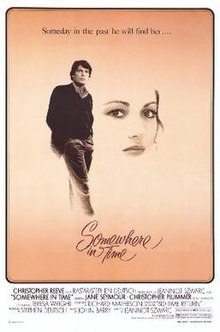
The most romantic movie ever made needed a strong emotional theme. While classic compositions from Rachmaninoff accecuate the sound, Barry's timeless (no pun intended) score cuts to the heart with all of its tragedy and triumph. It still boggles me that no one has tried to make a musical out of the building blocks that Barry left.
9. Willow - James Horner
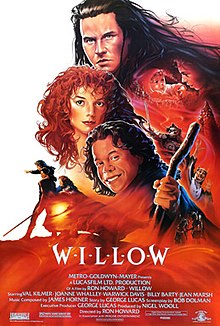
For years I thought this was a John Williams score, which is a compliment to Horner. It is every bit as epic and memorable as any Williams score. "Willow in the World" is filled with awe-and child-like magic, the festival theme is full of life and fun, the villains themes are dark and forboding. But "Madmartigan" is a song that raises my spirits and fills me with the call to high adventure.
8. The Mission - Ennio Morricone
 f
f
There are some pieces of music that break your heart every time you hear them. The music from The Mission is one those things. Morricone is best known for his work on the Spaghetti Westerns. But I believe this is his masterpiece. The music conveys not only the violence and forboding of this tragic story, but it is filled the beauty that this world has to offer. There is a line where the bishops says, "With an orchestra, the Jesuits could have subdued the whole continent." When you listen to "Garbiel's Oboe" you believe that this could be true. That song raises your soul to the heights of heaven only to feel it is just out of reach of this world. When the heavenly and hellish songs collide in the end, the darker tones push out the brighter ones. But Morricone's genius is that it is only the heavenly songs that linger in your memory.
7. Up - Michael Giachino
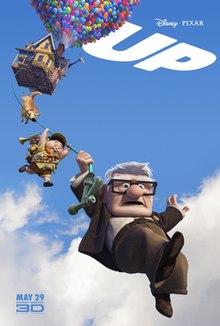
One of the great things about this score is the versatile use of the main theme. With a few simple notes, Giacchino can convey fun, nostalgia, romance, adventure, and utter, utter heartbreak. It is quite incredible how he can make every song sound different while using the same sequence of notes. That take a real mastery, espeically considering how powerfully you feel contradicatory emotions depending on how those notes are arranged.
6. Superman - John Williams

Few scores are as iconic as this one. Williams forever merged character who existed for forty years with a song that will forever be associated with him. It has all the triumph, power, and virtue that you associate with Superman. The musical theme for Krypton has all the grandeur of that great society. "The March of the Villains" is a fun throwback of buffoonish bad guys. The love theme glides on air like the two main characters. And the theme before he turns back the world is so empty and heartbreaking. A truly great score.
5. Star Wars Episode VI: Return of the Jedi - John Williams

What makes this Star Wars score rise so high in the ranks are the "Return of the Jedi" theme where Luke rescues Han. That piece of music embodies all of the great and timeless adventure of the Saga. The score also encorporates so many of the previous themes like "Imperial March" and "Yoda's Theme." "The Emperor's Theme" has a ghostly forebodance to it that is haunting. But there are two pieces that rise above the others. The first is the final confrontation between Luke and Vader. It builds to such an emotional climax that you can feel the entire story riding on this moment. The use of the men's chorus gives it an almost religious significance, like the ultimate battle between good and evil. The second is "Yub-Nub." Rarely is there a more joyful song to end a story.
4. Schindler's List - John Williams
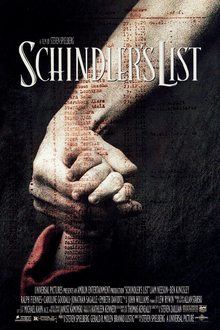
This is so unlike most of John Williams' work. He has to work on more subtle emotions through most of the score. But when he pulls at the heartstrings, it rips you in two. You can feel the spirit of the Jewish people pervade this score, their centuries of struggle and the calamity they are enduring. His main theme has such highs and lows that it touches the depths of the human heart. Through its horrible saddness, there is light: just enough life to give us hope in the world.
3. Braveheart - James Horner

Horner gave us a score that captures the grandeur of this movie. His use of the bagpipes is so versatile that I am literally shocked how he pulled it off. He makes them fun and thrilling, but also hauntingly beautiful. But he doesn't rely on that instrument as a crutch. He pulls out a beautiful orchestration. In the final scenes, the gentle and uplifting music contradicts the horror on display. And yet it works so well down to the very last note that closes out the movie with a perfect marriage of sound and image.
2. The Lord of the Rings: The Fellowship of the Ring - Howard Shore
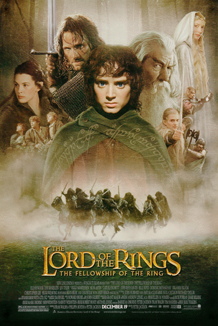
Shore established the sounds of Middle-Earth with this movie. I remember before the movie came out I heard "Concerning Hobbits." From that one song alone, I was transported. The Shire felt like a real place in a way that no other fantasy world did. And that is what Shore did with the entire score. He made Tolkien's world feel like a lost history with a real cultural treasure. His Fellowship theme is one of the greatest adventure compositions ever. "To the Bridge of Khazad-dum" might be one of the greatest chase sequence songs ever written, all the way down to its heartbreaking end. But "The Breaking of the Fellowship," carries all of the movie's big themes and strong emotions to its powerful conclusion.
1. Star Wars Episode IV: A New Hope - John Williams
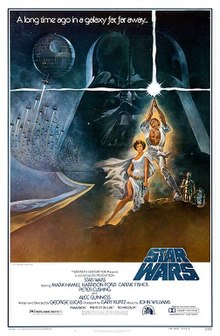
There is no topping this score. It is soaked into every part of the movie and into every part of popular culture. The main theme alone deserves endless credit. But Williams also gave us Wagnerian works like "Princess Leia's Theme" along with fun earworms like "Mos Eisley Cantina." Every piece of music is in this score is utterly transportive. Whenever I hear it, I am reminded of the words from Field of Dreams, "The memories will be so thick, people will have to wipe them from their faces." I am not ashamed to say that when I am driving, if I hear the final Death Star battle sequence, I grip the wheel a little tighter and I can feel myself racing down the trench until Han Solo has my back and I take that final shot. This might be the perfect score.
HONARABLE MENTIONS
Back to the future
A Beautiful Mind
Aliens
The Last of the Mohicans (1993)
Pirates of the Caribbean: The Curst of the Black Pearl
Krul
Dragon: The Bruce Lee Story
Star Wars Episode V: The Empire Strikes Back
Star Wars Episode II: Attack of the Clones
Thoughts?
Sexuality/Nudity Acceptable
Violence Acceptable
Vulgarity Acceptable
Anti-Catholic Philosophy Acceptable
Allegory is notoriously hard to do well. It either comes of as too simplistic or too on-the-nose to be effective. It is especially difficult when dealing with complex things found in a coming-of-age story. But against all odds, Inside/Out 2 has cracked the code. Not only is it a wonderful allegory of adolescence, it is the best PIXAR movie since Toy Story 3 (and yes, that includes the original Inside/Out)
The movie picks up a few years after the original. Riley (Kensington Taliman) is getting ready for high school. Her interior emotions of Joy (Amy Poehler), Sadness (Phyllis Smith), Anger (Lewis Black), Fear, (Tony Hale), and Disgust (Liza Lapira) have been guiding her emotional growth. Inside, we find that the memories she holds onto as core memories begin to form her basic beliefs, forming a sense of identity. Riley heads off to a hockey camp with her 2 best friends, but she finds out they are going to a different high school. This sets off an emotional crisis where she has to choose between her old friends and impressing the older, cooler girl Valentina (Lilimar). Inside, puberty is causing Riley to have new emtions including Anxiety (Mya Hawke), Envy (Ayo Edebiri), Ennui (Adele Exarchopolous), and Embarrassment (Paul Walter Hauser). The original emotions are having trouble navigating Riley's new adolescent life and so the other emotions begin to take over. Anxiety eventually banishes her old emotions and buries them deep down. Anxiety begins to layer in new core memories, changing Riley's belief core. This starts the quest for the original emotions to find Riley's original, innocent beliefs before her new beliefs are corrupted forever.
First of all, the movie is stunning to watch. Director Kelsey Mann was smart to not try a complete redesign of the original, but instead added more layers to Riley's inner world. The new character designs are also great. Anxiety's wide eyes and wirey frame convey her emotional state very strongly, as does Embarassment, who towers over everyone else, but tries to hide in his hoodie. The characters have a strong attribution by appearance, so that you understand their core essence just be looking at them.
But in order for the allegory to work, it has to come from a place of deep truth. And that is where the movie really shines. Riley's painful social navigation is all too universal in its feel. Social dynamics of high school are horible to navigate and perfectly relatable. One of the great things is that from an adult on the outside, I can see how little pressure the older girls are putting on Riley to fit in. But from inside, the pressure is incredible and perfectly understandable.
As Anxiety begins to take over, the allegory works even better. There is a wonderful scene where we are in Riley's imagination centers and Anxiety is ordering the imagination to draw up every worst-case scenario. I also have to say I think that this movie has (what might be) the best visual representation of what a panic attack is like both from the inside and the outside.
There moments of real pathos and depth, even from the allegorical characters. There is a heartbreaking moment where Joy contemplates her role in Riley's life going forward and says, "Maybe this is what happens when you grow up. You feel less joy." That line was so potent and powerful, it reminded me of The Breakfast Club: "When you grow up, your heart dies." So often we let the worries and anxieties of adulthood rob of us of that childlike joy. I think this is what Jesus meant when he said that you must have the faith of child, because it is a joyful faith. I think, perhaps, only the saints retain the joy of childhood.
I also love how our memories form our beliefs. I've been teaching adolescents for decades now. One of the things I've found is that they are always in search of who they are. It is a time when they don't know who they really are, but they are getting so many messages from people telling them who they ought to be. At first, I was a little dubious of the movie's concept of belief formation. Riley's original belief comes down to "I'm a good person." This is something I thought was too caught up in a self-esteem ideology. But the movie was smarter than I gave it credit for. The simplicity of the belief is refelctive of her innocence, which is now being changed and tested.
It was also a brilliant move on the part of writers Meg LeFauve and Dave Holstein to make the characters almost exclusively female. First of all, one of the sad realities of psychological development is that when girls reach adolescents, they become higher in negative emotion. This is perfectly reflected in Riley's interior life. The second is that it completely side steps the romantic psycho-sexual development of puberty. I think this would have been too big of an issue to tackle appropriately. Turning Red tried to handle it and it was a colossal failure. Instead, the film makers give us an honest and insightful look into the emotional life of the pubescent female without having to lose any of the innocence required to tell the story appropriately. As a result, this movie is something the entire family can enjoy.
Human beings are messy and complex. And our emotions are neither good nor bad, though they can lead us in negative directions. This movie shows how everyting, even Anxiety, has a place in our lives in its proper place. This is a lesson that is not conveyed by preaching, but by letting us experience the inner journey in Riley, which is also really the inner journey in all of us.


15 words or less film review (full review to follow soon)
 |
Sexuality/Nudity Acceptable
Violence Acceptable
Vulgarity Acceptable
Anti-Catholic Philosophy Acceptable
After terrifying us with A Quiet Place, writer/director John Krasinski is jumping into the other end of the cinematic pool with the family-friendly IF. And just like A Quiet Place, IF is a visually engaging and thematically rich film.
IF is the story of Bea (Cailey Fleming). In the opening sweet and sad montage, we find that her mom passed away from cancer (Catharine Daddario). And now at the age of 12, Bea has to move in with her grandmother (Fiona Shaw) because her father (John Krasinski) has now been hospitalized as well. Though her father wants her to enjoy her childhood, the past has caused Bea to put away childish things. However all of that changes when she runs into upstairs neighbor Cal (Ryan Reynolds), who is working with discarded imaginary friends (or IF's). These are creatures that were close companions of children who have now been completely forgotton and so are either living in lonley retirment or are desperatly trying to find a new child to befriend. Bea decides to help Cal and the IFs in their quest to find happiness once again.
Children's stories with premises like this are a dime-a-dozen. The difference is in the themes and the execution. Thematically, this movie is quite touching. Children in today's society are in such a hurry to grow up. And the culture surrounding them seems only too eager to rob them of their innocence. Bea looks at adulthood as armor to shield herself from the pain of the past and present. The sad part is that she is correct. But the way that happens is that adults lose that innocent vulnerability and openness, that sense of wonder. To paraphrase CS Lewis, the only way to guarantee that your heart will not break is to turn it into stone. This movie is about holding on to that sense of magic.
The direction is spot-on. Krasinski is able to bring literal and emotional color to brighten his world. He knows how to use the special effects properly, making them photo-realistic, but never losing their sense of other-worldliness. The designs of the IFs are incredibly fun. Blue (Steve Carrell) is a giant, hairy, purple monstor with enthusiastic innocence. Blossom ( Phoebe Waller-Bridge) is black-and-white cartoon insect with old school British sensibilities. My favorite might be Lewis (Louis Gosset Jr.) as the old Teddy Bear that brings wisdom, empathy, and sadness to the story.
Krasinski is directing this movie at children, so he makes sure to make the film as visually engaging as possible. A marvelous sequence in the IF's retirment home was a joy to watch. But, like some of the other great children's films like Up, the movie also works on a deep level with adults. Those of us who have left adulthood now have the sad knowledge of what we've left behind. Krasinski's movie shows us a way regain some of that wonder to help us be more childlike without being childish.
The performances are very good as well. Fleming is good as Bea: precocious, but not so precoucious as to be off-putting. Reynolds is both sarcastic and vulnerable. He shows us how Cal's humor and cyncicsm are a way to cover up a deep, abiding sadness. The voice-acting on the IF's is excellent, especially with Carell, Waller-Bridge, and Gossett Jr.
I do wish the movie was a bit funnier. For some reason, I couldn't quite connect with all of the humor. It was like my experience with a lot Tina Fey-related projects: I get the joke and why its funny, it just doesn't make me laugh as much as it should. That doesn't mean that the movie is unfunny. But while pulling at the heart-strings is good, it might have been more effective if the jokes were punched up a bit.
Leaving IF, the scenes stayed with me and I still hum the final tune during the closing credits. I think that is a testament to its strength in an age when so many movies are dispoable fluff.
IF has to power to make you feel like a child again, even if only for a moment.

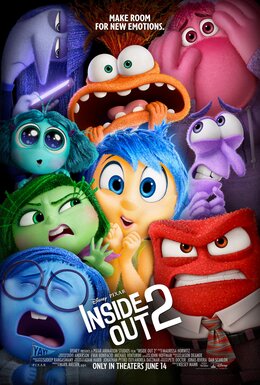
15 words or less film review (full review to follow soon)

“At that statement his face fell, and he went away sad, for he had many possessions.” (Mk 10:22) This story is a foil to the discipleship calls found earlier in the Gospel. In Mark 1, Peter, Andrew, James, and John are called by Jesus, and they drop everything to follow Him. When Jesus calls Levi to discipleship, he also drops everything to follow Him. Here we have a similar call to discipleship, but this time we have someone who does not respond positively to the call. He goes away tragically sad because of his many possessions.
The other disciples mentioned above did not seem to come from great wealth (though Levi was a tax collector). This is not to say that they were destitute. Archaeological evidence of fisherman houses at Capernum shows that they were quite sizable. The implication seems to be that the danger of great wealth is that it becomes very difficult to let go of it for the sake of Jesus.
The rich man encounters Jesus as He is setting out on a journey. We see later in the chapter that they are on their way to Jerusalem and stop in Jericho. In Jericho, there would have been a great divide among the rich and the poor. It would make sense for Jesus to address this disparity with his disciples before entering into an area of such strong economic disparity. It has also been theorized that Mark makes use of this moment as a reminder to his own community. The audience to whom Mark is writing may have had similar issues regarding wealth disparity. There may have been some in the community with abundance while others were in poverty. This dialogue would serve to remind Mark’s audience about the need of those with more to come to the aid of those with less.
After the rich man leaves, Jesus begins a dialogue with His disciples about wealth. “How hard it is for those who have wealth to enter the Kingdom of God.” (Mk 10:23). The reaction of his disciples is that they were “amazed.” (Mk 10:24). They are then “astonished” (Mark 10:26) when Jesus uses a now-famous analogy to describe this difficulty: “It is easier for a camel to pass through [the] eye of [a] needle than for one who is rich to enter the kingdom of God.” (Mk 10: 25)
To return to the idea that the disciples were “astonished” and “amazed,” we should take note of how wealth was traditionally viewed by the 1st Century Jewish community. Those who had money were generally viewed as blessed by God. The material success was understood generally as a reward for faithfulness. Therefore, it would have been exceedingly shocking to the Jewish listener to hear Jesus say these words. In their minds, the wealthy were those who were closer to God. But here, Jesus describes wealth as an impediment to salvation.
A few weeks ago, a friend of mine (T. Martin) posted his list of his Top 10 Favorite Movie Soundtracks. This got me thinking about what my own list would be, but I ran into a number of problems.
1. What categorizes a soundtrack?
Are we talking about the score or the use of popular music? Because these are two radically different things. And what about original movie musicals?
2. What about the mixed soundtrack?
How many movies have a mix of original scores and popular music. Do they both get credit as being great if one is an original composotion and the others are not?
3. The John Williams problem?
Any list of the greatest scores is going to be dominated by the mighty John Williams. How could it not be? But that would make most lists very boring to write about.
4. High subjective emotional responses?
Music is the most emotionally targeted of the arts. Assesments of a soundtrack's quality will depend greatly on the emotional reception of the listener.
5. Great pieces or the whole album?
There are some fantastic pieces of music found in movies that may be surrounded by a mediocre score. For example, the movie The Switch has an utterly charming little score called "Lice," but the rest of the soundtrack is not very good. But because I am moved by that one score, do I elevate the rest of the soundtrack?
With this in mind, here is what I have decided:
CATEGORIES
The albums will be diveded into three categories:
1. Score - this will be focused on the instrumental music composed originally for the movie.
2. Soundtrack - this will focus on popular music used by the filmmakers.
3. Original Musical - this will focus on musical albums composed just for this film.
In regards to score, because John Williams is so dominant, I have decided to do a list of Top 20 instead of Top 10 so that there will be a better spread.
In regards to albums that have both score and soundtrack items, I will decide if any of them rise to the level of greatness in either category (or potentially both).
I've also decided to focus on the entire album. For example the main theme to Back to the Future is amazing. The rest of the score is good, but does not reach the same level. To be on the list of best scores, not every track as to be good, but enough of them to warrant mention of the entire album.
With that, here are the Top Movie Scores #20-#11
20. Henry V - Patrick Doyle

This is a score that made me take notice. He puts potent danger in the presence of the monarchy as well as the solemn melencholy of military campaigns. He places in there the sweeping epic of the topic. But it is his score for the Agincourt speech that never ceases to uplift.
19. Star Wars Episode III: Revenge of the Sith - John Williams
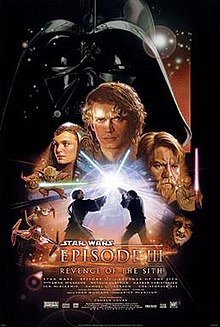
It is so difficult to decide between Star Wars scores. But this one not only captures some of the almost religious overtones of the story, it maintains its roots in grand action set pieces. Williams knows when how to put a pit into your stomach with "Padme's Ruminations." But "Battle of the Heroes" is one of the best Star Wars themes that never fails to conjur up the movie to my mind in vivid detail
18. Jurassic Park - John Williams
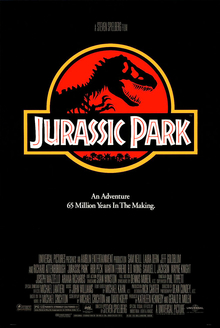
I remember being in the theater when that bombastic score played as the helicopter first came to the island. I knew then that I was watching something special. But then Williams outdid himself by giving us a strong sense of wonder in song as we see the dinasaurs. The rest of the score skillfully moves through various emotions from adventure to terror with the skill only Williams has.
17. Jaws - John Williams

Everyone knows the iconic theme for the shark. But the rest of the score is incredibly touching for a movie that should (on paper) only have been B-movie schlock. Listen to the incredible tenderness in the scene with Brody and his son at the table. Hear the high-seas adventure in the "Shark Cage Fugue." And listen to the slow forboding of Quint's tale.
16. Indiana Jones and the Last Crusade - John Williams
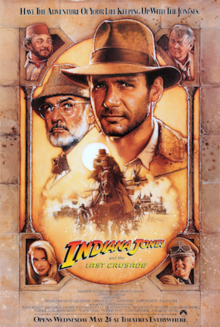
The entire score is wonderful to listen to. Williams puts so many little flourishing themes into each piece like the "Cross of Coranado" or the "Grail" theme. He mixes them in expertly along with the classic score while touching on the comedic aspects of the father-son relationship. What amazes me is that there are times when he hits an incredibly exciting muscial flourish but never leans on it too heavily, as when Indy is riding up to the tank on his horse. Others may disagree (and I respect the difference) but I think this is the best Indiana Jones score
15. Rocky - Bill Conti
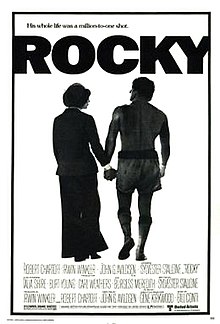
Of course the big themes are the ones that people remember from this movie and rightly so. Conti did something kind of a incredible: he gave us a timelss score that is clearly tied to that specific era. It is a 1970's sound that is effective in all ages. It shouldn't work but it does. The main theme is also incredibly versatile in how he uses it in different tempos and tones to get across subtle and not-so-subtle changes in emotion.
14. Lars and the Real Girl - David Torn

This will probably be my most controversial choice on the list. This comes from a small movie and the music is comprised mostly of light piano, strings, and accordians. But it is amazing how this quircky collection of sounds can be so deeply beautiful and effective. Every time I hear the "Lars and Margo" theme, my heart breaks a litte. Even the smaller pieces like "Karin Accepts Him" have this fairytale-like quality that helps elevate this small movie.
13. The Lord of the Rings: The Return of the King - Howard Shore
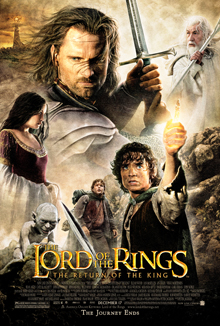
For "Into the West" alone, this album belongs here. But Howard Shore creates an epic sound worthy of the movie that it comes from. Every piece of music captures the granduer and drama of what is placed before us on screen. How seemlessly he goes from tragedy to triumph to heartbreak in just a few notes without ever feeling false. Beautiful.
12. Star Wars Episode I: The Phantom Menace - John Williams

I cannot tell you how many times I listened to this score over and over again in my car. For sixteen years we were hungry for more Star Wars. And while some people dislike The Phantom Menace, Williams gave us some of the Saga's best music. "Duel of the Fates" is forever in the top movie themes of all time. But the entire score is filled with thrills and dark flourishes. But what I think is the most brilliant and subversive part is how the "Emperor's Theme" is woven into "Augies Great Municipal Band," thus telling the audience that the victory they are celebrating is really a defeat.
11. The Shawshank Redemption - Thomas Newman
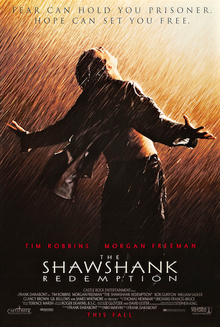
One of the thankless jobs of a score is that it has to capture the feeling of a movie even when it is not pleasent. A lot of the prison drudgery is captured wonderfully by Newman. The horror and sadness and suspense are all there too. You can hear the sands of time running out during "Brooks Was Here," like a melencholy music box. But then he uplifts you with that finally that doesn't feel cheap, but a well-earned rise out of darkness.
Stay tuned for my Top 10.

"The Dark Side of the Force is the pathway to many abilities some consider to be... unnatural."
There has been a lot of talk about the new Star Wars TV show The Acolyte. Critics love it, giving it an over 90% score on Rotten Tomatoes. Most old school fans of the Saga seem to hate it, calling it the worst thing since The Last Jedi. Is either side correct or is the truth somewhere in the middle?
Bottom line: The Acolyte is not good.
But it is not She-Hulk level bad.
This review will be SPOILER HEAVY because there is really no way to talk about this show without talking about the plot points.
The story revolves around the murder of Jedi. I would say it is a murder mystery, but the show reveals the murderer part way through the first episode. The mystery is not who the killer is but why. And this too does not feel to be very deep.
The murderer is Mae (Amandla Stenberg) who is hunting certain Jedi for a past crime against her. She is under the tootalge of some dark force user (hence the title of the show). Her twin sister Osha (also Stenberg) is a dropout Padawan who is arrested mistakenly for Mae's crime. She encounters her former master Sol (Lee Jung-Jae), former fellow Padawan-now-Jedi-Knight Yord (Charlie Barnett) and Sol's current Padawan Jecki (Dafne Keen). Together they try to track down Mae before she kills again.
The first episode was mostly boring. Osha is essentially Rey 2.0. She is smarter than everyone around her, especially concerning technology and seems to be the key to everything. Mae also seems to have very little personality other than angry. Yord and Jecki also seem to have an absence of anything intersting about them. They try to have an MCU-type banter, but it feels very out of place. The only interesting character from that first episode was Sol, but he really only began to become intriguing in the second episode.
I do have to say that episode 2 was better than I expected. This is mostly due to Sol, who shows more depth than the other characters. Mae tries to assassinate a Jedi who is an impervious Force bubble in a state of meditation. Her solution is to talk him in to commiting suicide by drinking poison. Some critics found this plot point stupid. I actually found it a bit intriguing. She basically threatens to expose his past crimes or let him die with his secret. This points to some horrible sin of the Jedi.
The first two episode have a lot of plot contrivances that don't stand up to much scrutiny, but I do not want to nitpik.
Episode 3 is the one that seems to be drawing the most ire.
Here we learn Osha and Mae's origin. They are from a coven for all-female Force witches. Their leader Mother Aniseya used the Force to conceive the twins in the body of Koril (Margarita Levieva). They are training the girls to take over the ways of their order. They call the Force "the Thread" that weaves into the destinies of all and that some can "pull" on the Thread. Aniseya wants the girls to take the burden of their teachings onto them. But when Sol and other Jedi discover the girls, they invoke the right to have the children tested as Jedi. Mae doesn't want to leave and so tanks the test. Osha wants to be a Jedi and decides to leave. Mae decides to try to murder Osha by setting her room on fire. Osha escapes but finds that all of the other witches, including Aniseya, are dead. Sol tells her that Mae's fire killed them all.
A lot of people say that this ruins Star Wars. I would say that it doesn't do anything to win back fans lost by The Last Jedi. The fanbase of Star Wars is 70% male. This show is clearly designed at drawing in (as the Critical Drinker calls them) "modern audiences." But that which is modern is the soonest out of date.
The reason why The Last Jedi should be considered a bigger turn-off is that the philosophy antithetical to Star Wars was placed in the mouth of its biggest hero: Luke Skywalker. In Revenge of the Sith, Palpatine spoke Star Wars heresy, but was acceptable because he was clearly of the dark side.
Whether showrunner Leslye Headland means to or not, her Force witches are clearly evil. Their alternate view of the Force sounds like Palpatine saying "If one is to understand the great mystery, one must study all of it's aspects, not just the dogmatic, narrow view of the Jedi." This pretty much sums up the perspective of these witches. The clearest example of this is in the creation of the twins.
Palpatine told Anakin about that the "Dark Side of the Force is the pathway to many abilities some consider to be unnatural." Anakin's fall to the Dark Side is motivated by his desire to have control over things that he should not. He was a Jedi, but he wanted the power of a god. Palpatine tells Anakin about Darth Plagueis who was "so powerful and so wise, he could use the Force to influence the midichlorians to create life."
Aniseya and Koril have taken upon themselves the power of the Dark Side. Why is this such a problem. Mary Shelley's Frankenstein is subtitled The New Prometheus. Dr. Frankenstein sins because he tries to take the power of God and use it for his own ends. Aniseya and Koril are doing the exact same thing. This is also the reason why we Catholics condemn things like IVF, which rejects God's design for the creation of sacred human life and instead tries to take that power for ourselves. The Force Witches come off as horrific cultists who use wicked powers to produce children to indoctrinate.
Now, the show is clearly moving towards some kind of moral equivelancy between the witches and the Jedi. There is no doubt that Mae's fire did not kill all the witches. One of the Jedi was clearly battle-damaged from a confrontation. My guess is that it will be revealed that the Jedi attacked the witches and killed them all. Afterwards they each reacted to their crime in different ways.
To be sure the system of the Jedi is flawed. The Prequel Trilogy made this same point: the Jedi were too removed from human connection to see things clearly. This is why Qui-Gon Jinn was the model Jedi who knew when to defy the council and why Luke Skywalker embraces his connection to Anakin and ignores Yoda and Obi-Wan's directive to kill him. In The Acolyte, the taking of Force-sensitive children from their families is clealry a problem. But The Acolyte seems to be putting both the Light Side and Dark Side on the same footing.
This philosophical perspective is the biggest objection that most fans seem to have with this show. My biggest problem is that the show is just not very good. The characters outside of Sol are not that intersting. The visuals are decent, but not compared to season one of The Mandalorian. The performances are not very good outside of (again) Lee Jung-Jae as Sol. Carrie-Ann Moss is not in enough of the show to get a sense of her performance. Stenberg does not have the presence to draw in the audience in a compelling way. This could be a problem with the writing more than the acting. Thinking back to The Mandalorian, think about how much Pedro Pascal was able to compel us with just his body language and his voice under the writing and directing of Jon Favreau.
I'm going to continue to watch the show to see if it improves.
But I am not hopeful.
Sexuality/Nudity Mature
Violence Mature
Vulgarity Mature
Anti-Catholic Philosophy Mature
I can't say that I am a big fan of the Mad Max universe. I've only seen some of the Mel Gibson trilogy and it was not to my taste. I reluctantly saw Mad Max: Fury Road and I thought that it was excellent. I wrote back in 2015:
The insanity of the world created by writer/director George Miller belies an amazingly tight narrative. Most action movies are a series of different explosive action set pieces. Fury Road is essentially one long, exhilarating action chase scene.
Nearly a decade later, George Miller has given us a prequel to Fury Road to tell the story of one of the main characters of that movie: Furiosa. Unlike Fury Road, which has an incredibly tight narrative and (as one reviewer wrote) an economy of story), Furiosa is a character epic spanning many years across the wasteland.
But I liked it as much as Fury Road.
The story begins with a young Furiosa (Alyla Browne) who ventures too far from the safety of her oasis to take the fruit of forbidden trees. She ends up getting kidnapped by bandits taken in by the brutal, insanse warlord Dementus (Chris Hemsworth). Dementus' roaving gang eventually brings him in contact with Immortan Joe (Lachy Hulme) from Fury Road. Through all this, Furiosa witnesses first-hand the horrors fo the wasteland. To survive and thrive, she needs to get by on her wits and her cunning. During her travails, she encounters all kinds of people like the wise, yet callow History Man (Geroge Shevtosov), the violent and predatory Rictus (Nathan Jones), and the stoic leader of Immortan Joe's convoy, Praetorian Jack (Tom Burke). What follows is violent and exciting, but always brutal as Furiosa grows into the a woman (Anya Taylor-Joy).
At nearly 80-years-old, writer/director George Miller still infuses his movies with the energy of a man a third of his age. The movie's action sequences are frenetic and thrilling, but told with by someone with the mastery of the visual medium. Contrast the mess that we find in a movie like Quantum of Solace, which tries to create the energetic chaos of a chase sequence by making an insane amount of cuts to the point where you cannot follow what is happening. Miller knows when how to use the camera. He moves it to its maximum effect so that it feels like insane pandemonium, but he secretly has complete control of the visuals so that he directs your attention exactly where it needs to go.
The world of Mad Max is horribly brutal. For some audiences, it will be too much. It is a world of dismemberments, slavery, canibalism... a world where most everyone treats life as a cheaper resource than gasoline. This theme is driven home in a scene where Immortan Joe tells Dementus to pick one of his war boys to confront Dementus' bandits. The movie is intentionally ugly in that way in order to highlight its utter inhumanity. But that is also Miller's point: what of human goodness can survive in this hellscape? This is a human race that has descended into Christless world.
The world is not just physically brutal, but it is emotionally brutal. There is one scene that has stayed with me and Miller filmed it so effectively. Two characters are caught by another. The two of them know that they will be condemed to the death. Their captor stands in front of them speechifying to his own soldiers. As he does, the two captives whisper tender words to each other and lean their heads on each other in affection. What grabbed me so much about this moment is that Miller does this all in a single-take wide shot. Any other director would have cut to a close of the two condemned and tightly captured their eyes filled with love and sadness and we would have heard clearly their last words to each other. But instead, Miller keeps us at a distance and we really cannot hear what they say. In the Wasteland, the tender moments are swallowed up by the violent insatiy of the world around them.
I think that the performances are pretty great all around. Taylor-Joy does a fantastic job as the determined Furiosa. Like Max in Fury Road, she has very few lines and has to convey most everything in her looks and body language. Another reviewer pointed out how the movie did not portray her has being a physical powerhouse with her petite frame. Instead, she uses her agility and weaponry to overcome her enemies. Taylor-Joy has to convey most everything with her eyes and her body language and is able to so admirably.
Hemsworth is clearly having a great time as Dementus. I remember being able to play a truly cruel person on stage once and there is some real fun to be had there, like scratching an itch that you can't in real life. I can see that same enjoyment in Hemsworth's performance. One of the really smart things that the script does is that it shows the difference between conquering and governing and how these two skill sets don't always overlap. Dementus is a vicious and brilliant tactician. But when he actually has to lead what he conquers, he is terrible at it and you can tell in Hemsworth's performance how little he enjoys it. But when the bloody battles occur, Dementus comes alive.
Browne does a good job as Young Furioso so that the transition she goes through feels believable. But I have to give special mention to Burke as Jack. His performance is very restrained, but he holds such tight control over his emotions that any feeling that comes through carries with it a lot more power. He speaks more powerfully with a look and the shooting of a flare than many actors do with pages of emotional monologues. I could not help being reminded of Russel Crowe's Oscar-winning performance in Gladiator.
The movie mostly a meditation on vengeance. Furiosa yearns for revenge and the karmic debt others incur towards her only increases as the movie goes on. The film is a little ambiguous as to her quest. Are we to side with her and revel in her blood lust or are we to see how this could corrupt her and turn her into the very thing she hates? I am actually okay with leaving a little bit of ambiguity here. The reason why is because of that intentional ugliness of Miller's world. He makes wickedness and cruelty horribly unnatractive. Even the smallest sentiment or loyalty is that much more precious because of it. Like Breaking Bad or The Godfather, sometimes the most moral stories are the ones that show you the repulsive face of evil.
The biggest problem with this movie is the pacing. Fury Road was 30 minutes shorter than this movie, but Furiosa feels like an hour longer. This is party an issue with covering such a longer span of time. But the movie could have lost those 30 minutes and the movie would have sailed at a better clip. The movie also ends with an incredibly long dialogue that brings sums up the main themes and character arcs. Rather than being cathartic, it felt a bit indulgent. And at a time when the movie should be speeding mightily towards the finish line, it instead begins to drag.
If you can stand the stark horror of the Mad Max universe, then Furiosa is a powerful movie that will have visceral action scenes and heartbreaking character moments that will stay with you after you leave the theater.
 |
Longtime readers of this blog will know that I am a gigantic fan of Geoff Johns. I think he is one of the greatest things to happen to comics in decades.
His output at DC has been minimal of late, but he has been focusing on his new creator-owned comics. He started a few years ago with Geiger and followed it up with Junkyard Joe.
A few months ago, he published Ghost Machine #1 which previewed his plans for an interconnected comicbook universe with these characters and others. Now, he has three ongoing series in his imprint and I have been voraciously reading every one of them. Johns has also been able to bring in some of my favorite writers and artists into his imprint, giving us comic stories of the highest quality.
Below are my mini-reviews of what has been published so far.
Geiger
I was not a huge fan of the original mini-series. It took a few issues for the emotional hook to find its way into the story. But by the end, I found myself caught in it. In this series, our hero is an irradiated man of power in a post-apocalyptic, iradiated wasteland in the American West. In this new ongoing, Geiger is on a quest to find a cure to his condition. Alongside him is a former enemy, Nate, who is following him as his unwanted sidekick and conscience. This dynamic is a lot of fun, with Nate acting as a kind of Sancho Panza to Geiger's reluctant Don Quixote, except that Nate is the one with all of the heroic optimisim. Gary Frank's art is as gorgeous as ever and this series feels like it has a lot more forward momentum than the mini-series
Redcoat
During the Revolutionary War, the cowardly and venal British soldier Simon Pure accidentally stumbled upon an occult ceremony meant to give one of our founding fathers immortality. As a result, Simon has been an unkillable scoundral and mercenary, relying mostly on his un-killability than any actual courage or skill. But his past catches up with him and with the help of a young Albert Einstein, he finds out that his immortal life may be cut short.
I've never seen Johns write such an anti-hero before. Yes, Black Adam is one of his better anti-hero's but that character carried with him menace and dignity. Johns writes Simon Pure as a lout who can barely understand the events of the story that are happening to him. Because of that it is quite strange and funny. He has such a cynical attitude towards everything that you can't help but be amused. Thought I can't say I'm a fan of casting a shadow on our founding fathers to make them look like occultists who worship the dark arts. But that aside, I've been enjoying this book. Bryan Hitch's art is visceral and detailed, always telling us about Simon's buffunary with his body language and facial expressions.
Rook: Exodus
Of the books that are out, this is the one I most enjoy the most. I heard a reviewer say that this book feels like a video game in the best possible way. It is transportive in the way that good sci-fi should be. The story is set on the planet Exodus, a place that was terraformed by a large corroporation to be an exciting paradise for new settlers. Our main hero came to Exodus to be a laborer, building the world for the new residents. He was charged with being an animal "Warden." This means he is given a special helmet that lets him commune with birds like rooks, ravens, and crows. However, something went wrong on the planet and all of the residents evacuated. The corporation said they would be back to evacuate the workers. They never came.
Now the planet has devolved into chaos. People try to piece together space ships to escape, but most fail. Rook spends most of hist time scavenging the empty cities and countryside looking for a means of escape.
This highly-imaginative world is brought to life by Jason Fabok's fantastic art. The world feels modern, but savage. It is such an intersting confluence of high and low technology.
Like Simon Pure, Rook is an anti-hero. But he is not a complete lout like Pure. Instead, he is reminiscent of Mad Max: someone who has been beaten down by loss and desperation and has turned inward and selfish, but cannot help but let his heroic side show now and then. With so few people left, the question of conflict or trust comes up often. The other wardens could be helpful allies or they could be his biggest threats.
This story has me hooked and I can't wait to read more.
Mark 10:17-31 tells the story of the Rich Man and Christ’s teaching on wealth. The story begins with the transitional phrase, “As He was setting out on a journey…” (Mk 10:17). This acts as a separating phrase that distinguishes this passage from the one that came before it. In the chosen passage, we see two conversations take place. The first is between Christ and the Rich Man (Mk 10:17-22), and the second is between Christ and His disciples about wealth (Mark 10:23-30). Both of these conversations are held together because the second conversation is a direct response to the events of the first. Together they form a complete story about Jesus and His teachings on wealth. The structure of the passage is that of three parts with a conclusion: “Jesus and the rich man,” (Mark 10-17-22) “Jesus and the disciples,” (Mark 10:23-27) “Jesus and Peter,” (Mark 10:28-30), and the conclusion (Mark 10:31)
As Jesus is setting out on His journey, “a man ran up, knelt down before him and asked Him ‘Good Teacher, what must I do to inherit eternal life?’” (Mk 10:17). The only other place in Mark where people “run” up to greet Jesus is when an amazed crowd runs up to Him (Mk 9:15). This verb may be used to show the effect that Jesus had on the people of his day. The only other time in Mark’s Gospel that someone kneels before Jesus is the leper (Mk 1:40). In both passages, it shows great reverance fr the Lord. We can therefore see that at the beginning of the story, the rich man comes to Jesus with an intense sincerity of heart. He is truly looking for the answer to his question. This is contrasted to Jesus’ enemies who would often ask him questions to trap him (Mk 11:27-33; 12:13-27).
Although sometimes this story is known as “The Rich Young Man,” there is no reference to the man’s age in Mark’s Gospel. It is only in the parallel story in Matthew that we are told that He is a young man, and that is a detail that is only given towards the end of his conversation with Christ. (Mt 19:20) Luke gives us the detail that the rich man is a “ruler” (Lk 18:18). However, it is clear from all three Gospels that he is wealthy because he has “many possessions”. This rich man uses the specific verb “inherit” regarding eternal life. This is similar to apocryphal writings like 1 Enoch 40:9, “who is in charge of the repentance to hope of those who inherit everlasting life.” There is also Sibylline Oracles lines 46-47 that state, “But those that honor the true eternal God inherit life.” With this background, the “question of the man who runs up to Jesus presupposes expectations of this kind.” The phrase “eternal life” was one that was common as an understanding of what would occur in the Messianic Era. This would imply that the man sees Jesus as the Messiah.
Jesus’ response is, “‘Why do you call me good? No one is good but God alone.’” (Mk 10:18). Jesus is reminding the man that God is the source of all goodness and that any goodness that we have in this world is from God alone. This is not a repudiation of His own divinity, as if by saying this, that it is wrong to call Him good because Christ is not God. The Church Father Origen references this passage and states that Jesus “is not of a different goodness… because He proceeds from no other source but from that primal goodness…”
Christ then points the man to the Scriptures. Jesus then proceeds to paraphrase the commandments. “‘You shall not kill; you shall not commit adultery; you shall not steal; you shall not bear false witness; you shall not defraud; honor your father and your mother.’” (Mk 10:19) It should be noted that these are not all of the commandments, nor are they in the order in which they are traditionally listed. Of note is “you shall not defraud.” This is perhaps a paraphrasing of the commandments against coveting. It may also be a reference to the words of the Prophet Malachi 3:5: I will draw near to you for judgment, and I will be swift to bear witness against sorcerers, adulterers, and perjurers, those who deprive a laborer of wages, oppress a widow or an orphan, or turn aside a resident alien,without fearing me, says the LORD of hosts.
This injunction against defrauding is followed by the command to honor your parents. It is possible that these two commandments are placed together because of an earlier statement by Christ regarding the duty of children towards their parents:
For Moses said, ‘Honor your father and your mother,’ and ‘Whoever curses father or mother shall die.’ Yet you say, ‘If a person says to father or mother, “Any support you might have had from me is qorban”’ (meaning, dedicated to God),you allow him to do nothing more for his father or mother. You nullify the word of God in favor of your tradition that you have handed on. And you do many such things.” (Mk 7:10-13)
Here, Jesus criticizes the Pharisees for allowing children to essentially “defraud” their parents with a loophole: if they declare that they will give their support to God instead of their parents, then they no longer are obligated to financially support their parents. Jesus sees this as “nullify[ing] the Word of God.” It is, in a sense, defrauding one’s parents of their rightful due. This may be why the command to honor your parents comes after the injunction against defrauding in Mark 10.
From a textual critical view, there are some ancient manuscripts that do not have this reference to defrauding in this passage. It is possible that this is influenced by the fact that in the parallel versions of the story in Matthew 19 and Luke 18, this reference to defrauding is also omitted. It is suggested that the fact that the other synoptic Gospels omit it, then this influenced some scribes to also omit it from Mark.